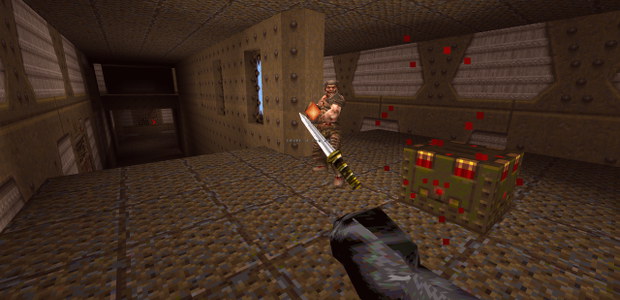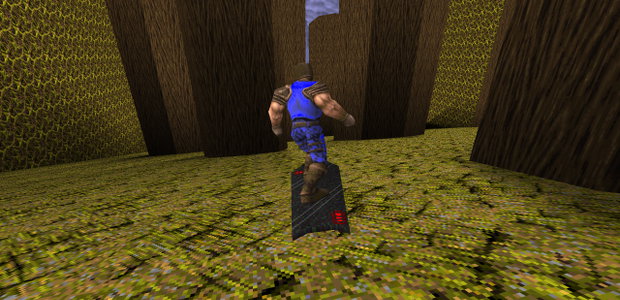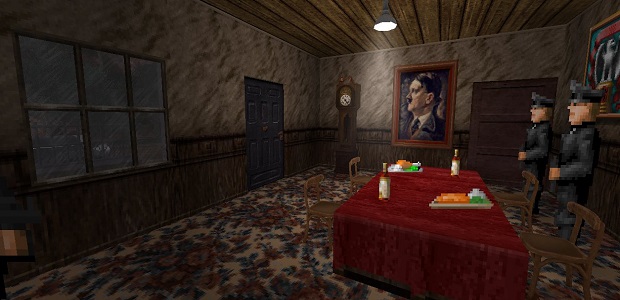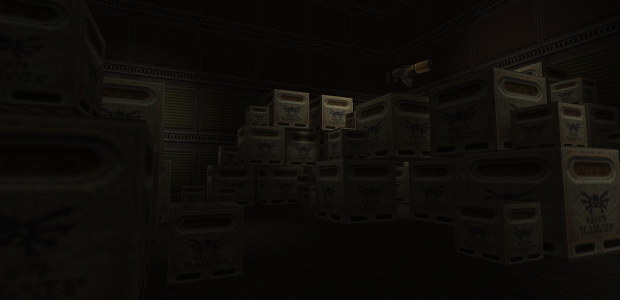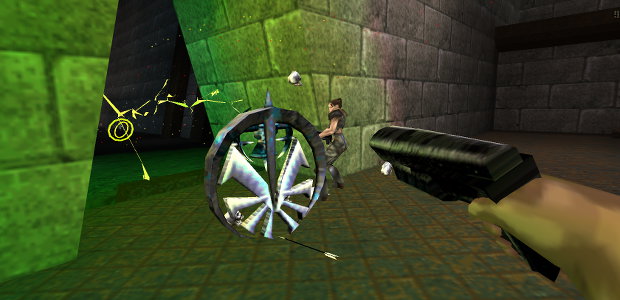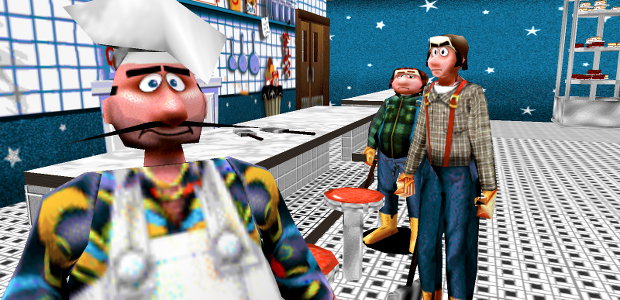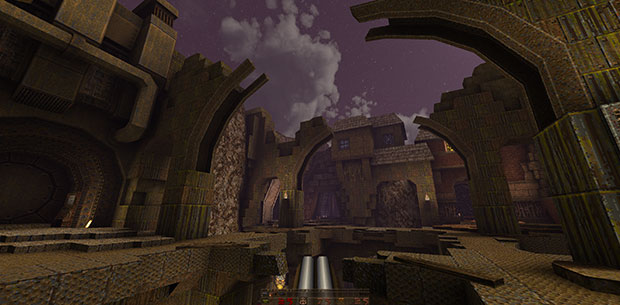
I don't remember which game we were playing, but it was the kind of Japanese RPG that listed everything you needed to know about its characters down the side of the screen. Magic points, coins, food, all summed up with helpful numbers. Only one of them was abbreviated: HP.
“What does HP stand for in this game?” I asked my friend, an expert on JRPGs.
“Health pineapples,” he confidently replied. “You have to knock all the pineapples off before you can hurt someone.”
HP, whether it stands for hit points, health power, or indeed health pineapples, is one of many mechanics to come to video games via the original tabletop roleplaying game Dungeons & Dragons. However, the idea of representing the amount of punishment a character can take with a discrete number of points is much older than D&D. And while we might all know what the abbreviation means, it turns out that what hit points are meant to represent isn't quite so obvious.
"They didn't care if they could kill a monster in one blow, but they didn't want the monster to kill them in one blow." D&D co-creator Dave Arneson
In a 2004 interview with GameSpy, D&D's co-creator Dave Arneson explained that the earliest version of the game didn't have hit points. The rules had evolved from wargames he and fellow D&D inventor Gary Gygax played, in which a single successful attack was all it took for a soldier to die.
That changed when they started experimenting with having players control individual heroes rather than entire armies, as players identified with them much more strongly. As Arneson put it, They didn't care if they could kill a monster in one blow, but they didn't want the monster to kill them in one blow.
Arneson had previously made his own rules for a naval wargame set during the Civil War called Ironclads, and together with Gygax had collaborated on a Napoleonic naval game called Don't Give Up The Ship! Both games had a mechanic that allowed for ships to take multiple hits before being sunk, which they'd borrowed from the wargaming rules designed by author Fletcher Pratt in the 1930s. They borrowed those rules again for D&D.
In his book about the history of simulation games Playing At The World, Jon Peterson explains why hit points were such an important idea: Hit points introduce uncertainty and variance [ ] In Dungeons & Dragons, even when the prospects of a hit are near certain, the damage dice provide another potential survival mechanism via endurance, another way of forestalling death and increasing the drama of combat.
From table to screen
Like D&D, video game combat discovered a new sense of drama with hit points. Early arcade games like 1978 s Space Invaders typically killed players with a single successful enemy contact, using multiple lives to prolong the experience. Replacing that with the ability to survive a set number of hits before dying added a finer-grained rise in tension. It removes the frustration of being reset to the start of a level every time a player is so much as brushed by an enemy, and as the number of hit points remaining falls your anxiety rises in direct correlation.
Being on your last life may make you cautious, but there's a smoother transition with hit points. You gradually shift between playing more carefully as you approach half-health, biting your metaphorical nails as it dwindles below that, and sinking into erratic risk-taking when only a sliver of life remains.
Video games inspired by D&D were the first to copy hit points, as far back as 1975 games PEDIT5 and DND, which were coded for the PLATO system designed by the University of Illinois. DND was also the first game to have bosses, who could have hundreds or even thousands of what it called Hits.
The first official adaptations of D&D to PC were the Gold Box series begun by SSI with 1988 s Pool of Radiance. They followed the rules of what was then called Advanced Dungeons & Dragons closely, which meant beginning characters had very few hit points. Playing around a table there s always the option to fudge dice rolls to prevent deaths from feeling too arbitrary, but the computer was never so forgiving and players got used to reloading frequently.
Games that weren t licenced had no such problem. The first Ultima began players with a tidy 150 hit points, and the second with 400. Important non-player characters like Lord British had totals so high that killing him became seen as a challenge, and by Ultima III players were luring Lord British to the beach so they could attack him with cannon-fire, as if he was one of the naval ships in the wargames hit points came from.
Arcade games tended not to represent hit points numerically, however. Memorably, in the platformer Ghosts 'N Goblins (ported to the Commodore 64 in 1986) Sir Arthur lost his armor on taking damage, continuing to fight in his underwear.
One of the first game to represent hit points with the now familiar life bar was Dragon Buster, a 1985 dungeon crawler by Namco with a Vitality meter that changed from blue to red as you took damage from its bats, snakes, and cave sharks. While red life bars would go on to become standard, other ways of visualizing hit points have been tried with varying degrees of success.
1983 ZX Spectrum/BBC Micro game Atic Atac had a slowly depleting roast chicken that tracked your starvation, and dinosaur fighter Primal Rage used veins leading to a heart that exploded at the moment of defeat.
Other games have tried to make their life bar a part of the game world, as in first-person Jurassic Park game Trespasser where it's a heart tattoo on the protagonist's breast you have to look down at to check. In sci-fi horror game Dead Space the life bar is represented by lights on the back of your armor, which would be very useful if you had a doctor standing directly behind you. Each of these visualizations is just a way of integrating a hit-point counter into the world, but in doing so they free the player from having to correlate a number with something that should feel real and immediate. They re all still the same old hit points, under the surface.
MIDI Maze, a 1987 first-person shooter on the Atari ST, was an early example of both the deathmatch shooter and the idea of representing hit points visually. Each player was a floating smiley face, like a three-dimensional Pac-Man, and an icon of that face at the top of the screen became sadder as they took damage. Later shooters like Wolfenstein 3D and Doom would copy this idea, their protagonists' faces growing more bruised and bloody as they absorbed bullet after bullet.
The regeneration generation
MIDI Maze is an early example of another change in the way hit points worked, as it also had regenerating health. It wasn't the first, however. The action-RPG Hydlide, released on Japanese home computers like the PC-88 in 1984, gave players back hit points when they stood still. Where other games had food and first-aid kits that functioned as magically as the healing potions in fantasy RPGs, regenerating health though no more realistic at least took health items out of the game world. It made healing an abstraction like hit points are, rather than requiring players assume Johnny Medkit has wandered the world ahead of them scattering healing items like seeds.
It was Halo: Combat Evolved that popularized regenerating health, which is ironic because it didn't really have it. Halo's hero Master Chief wears an energy shield that regenerates after a short interval without taking damage, but once that's gone he has a traditional life bar that can only be refilled with medkits.
However, the recharging energy shield was what gave Halo its famous 30 seconds of fun that happened over and over and over and over again as designer Jaime Griesemer put it, letting players pop out of cover to shoot aliens and then duck back to recharge and reload, and that's what had a lasting impact.
The idea was copied and modified by plenty of other games. Call Of Duty has become the flag-bearer for regenerating health, taking the blame for its propagation though it wasn't introduced until the second game in the series. Even in the mid-2000s as it was first becoming widespread, regenerating health was criticized by old-school shooter fans for removing some of the drama and tension that hit points represent. It's still enraging comment sections today.
Three games released in 2005 and 2006 all tinkered with ways of making regenerating health retain the sense of rising tension that hit points were first introduced to create. Condemned: Criminal Origins, Prey, and F.E.A.R. all set a floor on automatic healing so that if you take enough damage to fall below around 25% of your hit points you can't regenerate back above that line. It models a difference between taking a serious wound and the kind of graze action heroes can just walk off, and adds grit to more serious games.
Regenerating health was criticized for removing the drama and tension that hit points represent.
When the Just Cause games toy with this, only letting you regenerate a percentage of the most recent damage you take, it can seem at odds with their over-the-top action.
Horror games have also tweaked the way they use hit points to suit the genre. Zombie game Left 4 Dead slows you down the more you're hurt, making it harder to run away from the infected as if you're a movie character being worn down by the chase. In Silent Hill 4: The Room you regain health in your apartment, but when that safe space becomes tainted it stops healing you, a mechanical sign of its corruption that ensures you feel the same dread the character would.
Back to the source
Still, across all of these games, what hit points represent isn't entirely clear. Are they purely the injuries you endure, as the suffering face of Doomguy suggests? If that's true why is it so easy to get hit points back, whether through healing items or regeneration or drinking Fallout's irradiated toilet water?
In The Lord of the Rings Online hit points are replaced by morale, which explains why singing a jaunty tune helps top it up. In the Assassin's Creed games it's synchronization, a representation of how accurately your digital simulation is recreating historical events although that raises the question of why being hurt during events where your historical analogue was also hurt doesn't improve synchronization.
Even in D&D it's unclear what hit points really are. In the Dungeon Master's Guide for Advanced Dungeons & Dragons 1st Edition, Gary Gygax wrote that hit points reflect both the actual physical ability of the character to withstand damage as indicated by constitution bonuses and a commensurate increase in such areas as skill in combat and similar life-or-death situations, the sixth sense which warns the individual of some otherwise unforeseen events, sheer luck, and the fantastic provisions of magical protections and/or divine protection.
(Charmingly, the rules then went on to explain that Rasputin would have been able to survive for so long because he had more than 14 hit points. )
Constitution, skill, sixth sense, luck, magic, and divine protection are a lot of things to bundle into one number, and raise further questions about why, for instance, poisoned attacks cause extra damage to your “sixth sense”. When asked about what hit points really are at conventions Gygax was dismissive, giving different answers to the question each time. Sometimes he said hit points represent the way swashbuckling movie heroes survive so many fights, or that they were an entirely meaningless number that represented nothing more than a way of making the game's combat more enjoyable for players.
That second answer is perhaps the best explanation. Given that hit points started out as a way of simulating the ability of a ship's hull to weather cannon-fire, it's only natural that there's going to be some vagueness and necessary abstraction when we apply that same concept to our video game heroes. They may as well be health pineapples, after all.
This feature was originally published in August 2016.





